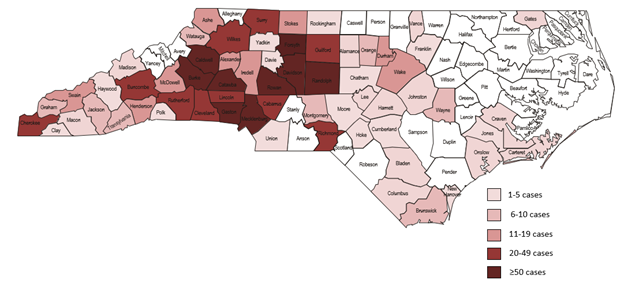

Food-Borne Illnesses & Food Poisoning
Hepatitis Organizations & Websites
Hepatitis A
Hepatitis A is a vaccine-preventable, acute liver disease caused by the Hepatitis A virus (HAV). It is one of the most common types of viral hepatitis and is highly contagious. Hepatitis A virus is usually spread from person to person when someone puts something in their mouth that has been contaminated with the stool of a person with Hepatitis A. This is called a "fecal-oral" route of transmission. With this type of transmission, the virus is more easily spread in areas where there are poor sanitary conditions or where good personal hygiene is not followed. HAV may be spread by consuming food or drink that has been handled by an infected person but is generally not spread by casual contact with an infected person in settings like workplaces, schools, or community events.
Most HAV infections in the United States result from contact with a household member or sex partner who has been infected with Hepatitis A. Since 2017, multiple states including North Carolina have experience outbreaks of hepatitis A spread through person-to-person contact.
A person is contagious about two weeks before and one week after symptoms appear. Symptoms may range from mild to severe and can include sudden onset of fever, fatigue, loss of appetite, nausea, abdominal pain, dark-colored urine, and jaundice (yellowing of the skin or white of the eyes). Infection with HAV is rarely fatal and most people recover in a few weeks without complications. Adults are more likely than children to develop symptoms. Symptoms commonly appear within 28 days of exposure, with a range of 15-50 days.
There are no special medicines or antibiotics that can be used to treat a person once symptoms appear. Generally, rest, adequate nutrition, and fluids are recommended for someone infected with hepatitis A. Once a person recovers from Hepatitis A, they are immune to re-infection for life and cannot spread the illness to others.
The best way to prevent Hepatitis A is through vaccination with the Hepatitis A vaccine. Vaccination is recommended for all children age one and up and for people at high risk for infection with the virus or for severe outcomes of infection*, such as:
Additionally, any person who has not previously completed the hepatitis A vaccine series may receive the vaccine. Complete guidance for populations recommended for HAV vaccination can be found here.
*Pregnant women who meet any of the above criteria should be vaccinated during pregnancy if not previously vaccinated
**People with a history of drug use or homelessness are overrepresented in correctional facilities. Programs to vaccinate incarcerated people can be an effective strategy for reaching people at high risk for HAV.
The second most important way to prevent person-to-person spread is careful hand washing after using the bathroom, changing diapers, and before preparing or eating food.
Two major outbreaks of hepatitis A occurred in North Carolina during 2018-2022. One outbreak occurred among men who have sexual contact with other men and was concentrated primarily in Mecklenburg County in 2018. A second, much larger outbreak occurred around the same time and primarily included users of injection and non-injection illegal drugs and people experiencing unstable housing or homelessness. This outbreak lasted until 2022 and affected many counties statewide, with cases concentrated in the western half of the state.
Many other states also experienced outbreaks among these high-risk populations during this time period. Additional information on outbreaks in other states can be found at https://www.cdc.gov/hepatitis/populations/msm.htm
https://www.cdc.gov/hepatitis/outbreaks/2017March-HepatitisA.htm
Below is a summary of cases associated with outbreaks in North Carolina from 2018-2022.
|
North Carolina Hepatitis A Outbreak Data, 2018-2022 |
Number of Cases (%) |
|---|---|
|
Total |
1,194 |
|
Sex |
|
|
Male |
798 (67) |
|
Female |
396 (33) |
|
Age |
|
|
0-17 |
2 (<1) |
|
18-29 |
246 (21) |
|
30-49 |
758 (63) |
|
50+ |
188 (16) |
|
Race |
|
|
American Indian/Alaskan Native |
19 (2) |
|
Asian |
0 |
|
Black or African American |
85 (7) |
|
Native Hawaiian or Pacific Islander |
0 |
|
White |
921 (77) |
|
Other |
12 (1) |
|
Unknown |
157 (13) |
|
Ethnicity |
|
|
Hispanic |
90 (8) |
|
Non-Hispanic |
917 (77) |
|
Unknown |
187 (16) |
Hepatitis A outbreak-associated cases by county, 2018-2022 (n=1,194)
